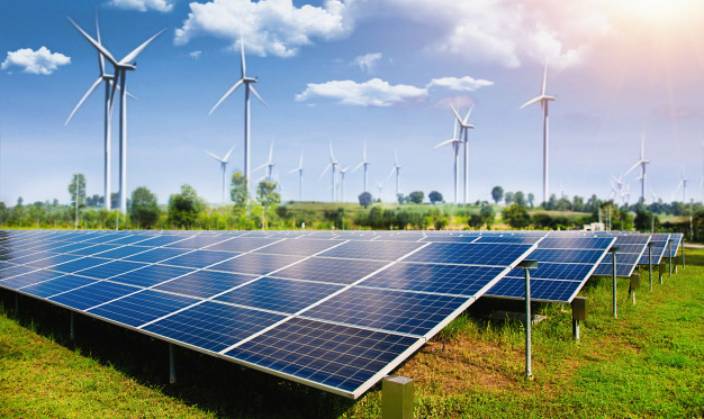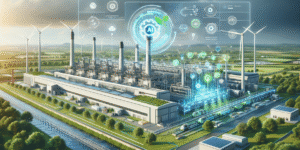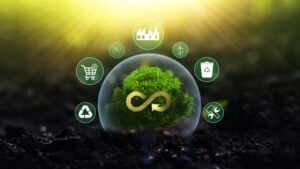Clean technologies are essential to meeting global sustainability goals and building an eco-conscious world, but advancing them requires cooperation among different institutions as well as supportive policies to overcome technical hurdles. Here are a few of the most exciting and promising clean technology innovations, which offer new possibilities to lessen our environmental impact while making everyday life more comfortable and convenient.
1. Self-healing Materials
Synthetic materials can be susceptible to microcracking, leading to catastrophic failure. Self-healing materials can detect and repair cracks quickly and extend their lifespan for reduced maintenance costs, improved product safety, and greater sustainability.
Scientists have developed four kinds of self-healing materials. These include materials containing embedded healing agents, those featuring an internal circulatory system similar to blood, shape memory materials, and reversible polymers. Scientists developed a carbon fiber reinforced composite that can be repeatedly repaired through heat application, changing its chemical makeup to reverse damage caused by objects like bullets.
2. 3D-printed Organs
Breakthrough innovations represent leaps that redefine what is possible—not simply improving existing technologies but creating whole new markets and industries in their wake.
The relatively new field of printing organs has shown great promise for both medical research and clinical applications. This technology works by printing living tissues or organs using bioink for printing living tissues or organs directly. Bioprinting relies on using bio-ink derived from cell-rich materials, like stem cells. Bioprinting itself can be accomplished using several techniques; however, one hurdle remains: printing an organ with an intact blood supply.
3. Artificial Intelligence
AI technology has long been utilized for personal assistance; however, other technologies are beginning to take advantage of its power. Boston Dynamics robots and Ocean Infinity’s autonomous boats use AI for radiation surveys, deep-sea exploration, and other hazardous operations.
AI’s future depends on its implementation. While nightmare scenarios suggest superintelligent machines could enslave or exterminate human beings, AI may also revolutionize industries while making employment more satisfying for humans.
4. Electrolyzed Water
Electrolyzed water has quickly established itself as an environmentally friendly cleaning technology, thanks to increased demand for eco-friendly technologies. As a multifunctional, non-toxic cleaner and disinfectant alternative, electrolyzed water has proven more effective than its toxic alternatives in applications including household cleaning, oral hygiene, and wound care.
Electrolyzed water is produced using electricity by applying an electrical current to a solution of table salt (sodium chloride). Anodes produce acidic electrolyzed water that can inhibit bacterial growth and disinfect surfaces, while cathodes produce basic electrolyzed water that hydrates and moisturizes surfaces.
5. Smart Devices
Breakthrough technologies that create limitless clean energy sources, like self-healing materials that repair cracks in buildings and nuclear fusion, which promises limitless clean power, are poised to revolutionize our world. These groundbreaking inventions are driving a transition toward low-carbon economies with profound implications for future generations. Smart devices are electronic tools designed to operate autonomously or interactively with their environment, using sensors, software, and network connectivity to automate tasks and enhance user experiences. They typically fall under the IoT umbrella.
Smart devices are complex machines, requiring specific knowledge for setup and troubleshooting. To make life simpler when setting up or troubleshooting these devices, look for user-friendly features to streamline installation and intuitive interfaces to facilitate use. Also take note of cybersecurity concerns, ensuring the device offers backup features in case of internet or power outages.
6. Biomimetic Surfaces
Biomimetic surfaces offer innovative solutions in numerous technological areas. Their design utilizes reentrant geometry to produce coatings that repel liquids even with very low surface energies, providing self-cleaning, de-icing, atmospheric water harvesting, and energy conversion functions, among others.
These coatings also demonstrate boundary lubrication to minimize friction at the micro/nano scale for the efficient operation and application of MEMS/NEMS devices, solar panels, and industrial components. Furthermore, they enhance performance while increasing durability.
7. Smart Homes
As evidenced by breakthrough innovations like self-healing materials that repair buildings, nuclear fusion that promises limitless clean energy sources, or smart homes that track your movements and alter lighting and music according to your mood, breakthrough innovations go beyond simply improving existing technologies—they open entirely new markets, transform industries, and overcome global challenges that had once seemed insurmountable.
Smart home technology places great emphasis on energy efficiency, with appliances programmed to run off-peak hours to save power. Furthermore, energy monitoring systems give homeowners real-time insight into their usage in order to identify areas of waste or inefficiency in real time.
8. Bio-fuels
Biofuels are renewable energy sources derived from organic matter. Examples of such fuels are bioethanol, biodiesel, and renewable diesel—each an integral part of global efforts to lower greenhouse gas emissions and combat climate change. Renewable energies offer an alternative to fossil fuels. Their use helps improve air quality in urban areas by reducing pollution levels, as well as helping decrease dependence on foreign oil sources while strengthening local economies.
Biofuels can be produced through various processes. Some methods use sugars to make ethanol, while others utilize oil waste for biodiesel production. Research is underway into next-generation biofuels like cellulosic biomass and algae as potential source materials.
9. Artificial Intelligence
Artificial intelligence, or AI, is the technology that enables computers to perform the tasks associated with human minds, such as perceiving, learning, reasoning, and comprehending language. You may already interact with AI without even realizing it—search engines use data that you provide to return relevant search results, while voice assistants such as Siri and Alexa help organize daily schedules.
Artificial intelligence technologies have proven useful for both businesses and personal lives alike, improving efficiency and safety while simultaneously creating new products and services. AI-powered robots may ease customer service workload and aid repetitive or monotonous work, while autonomous vehicles reduce human exposure to risky situations.




